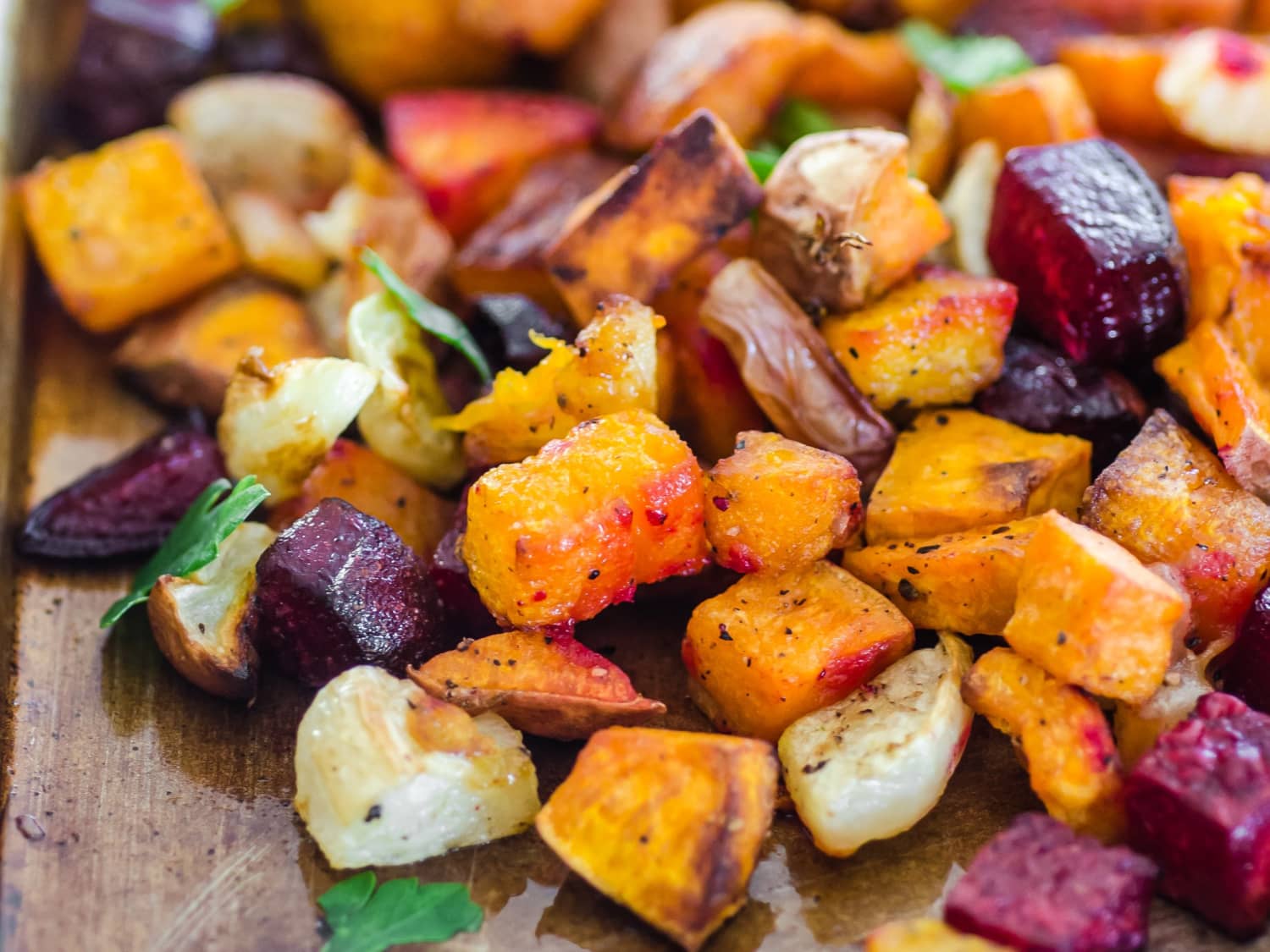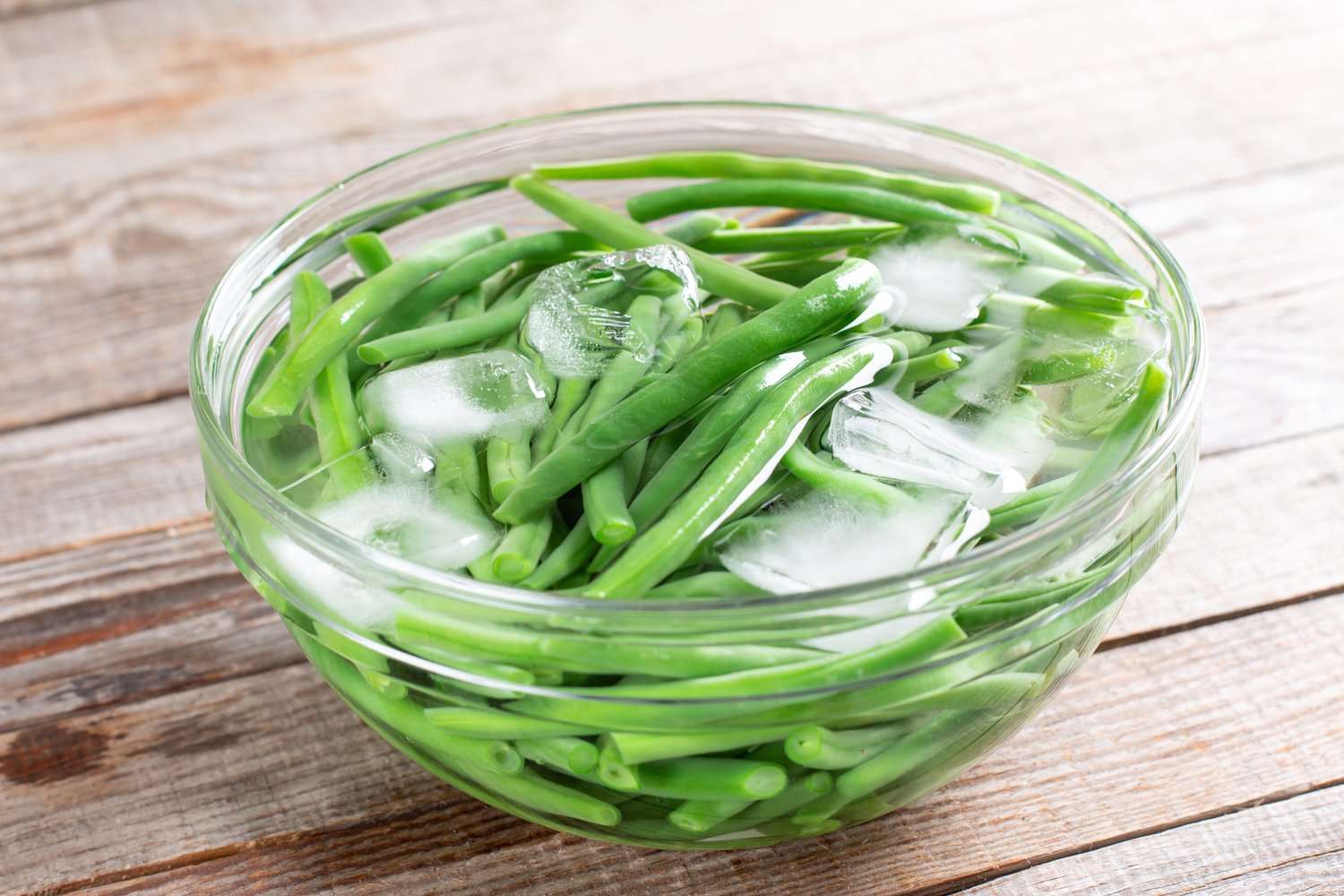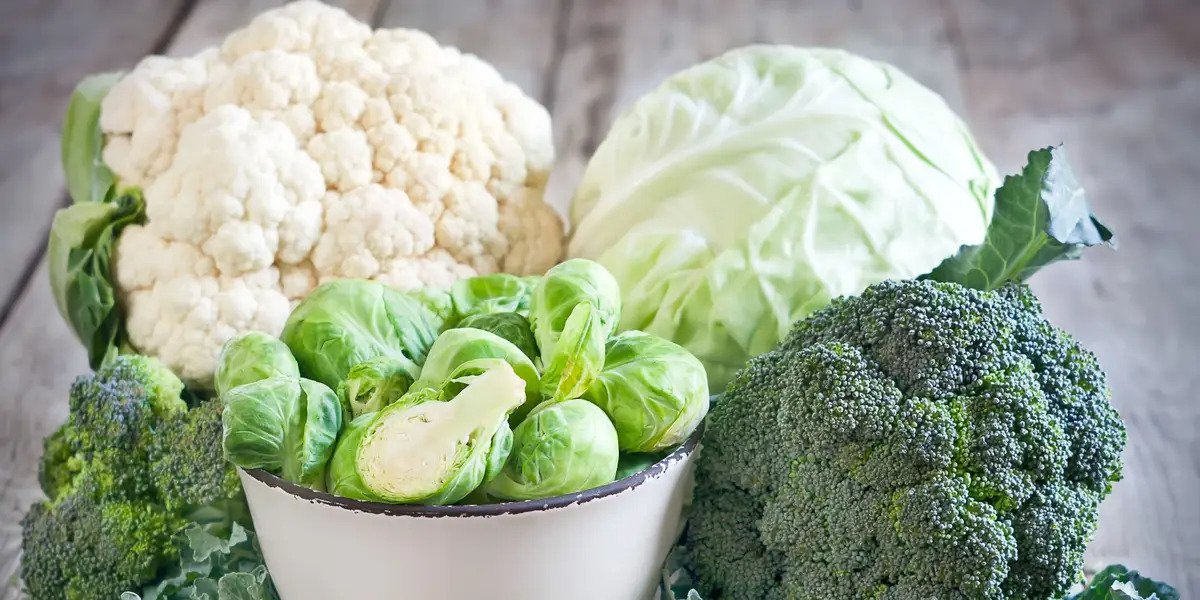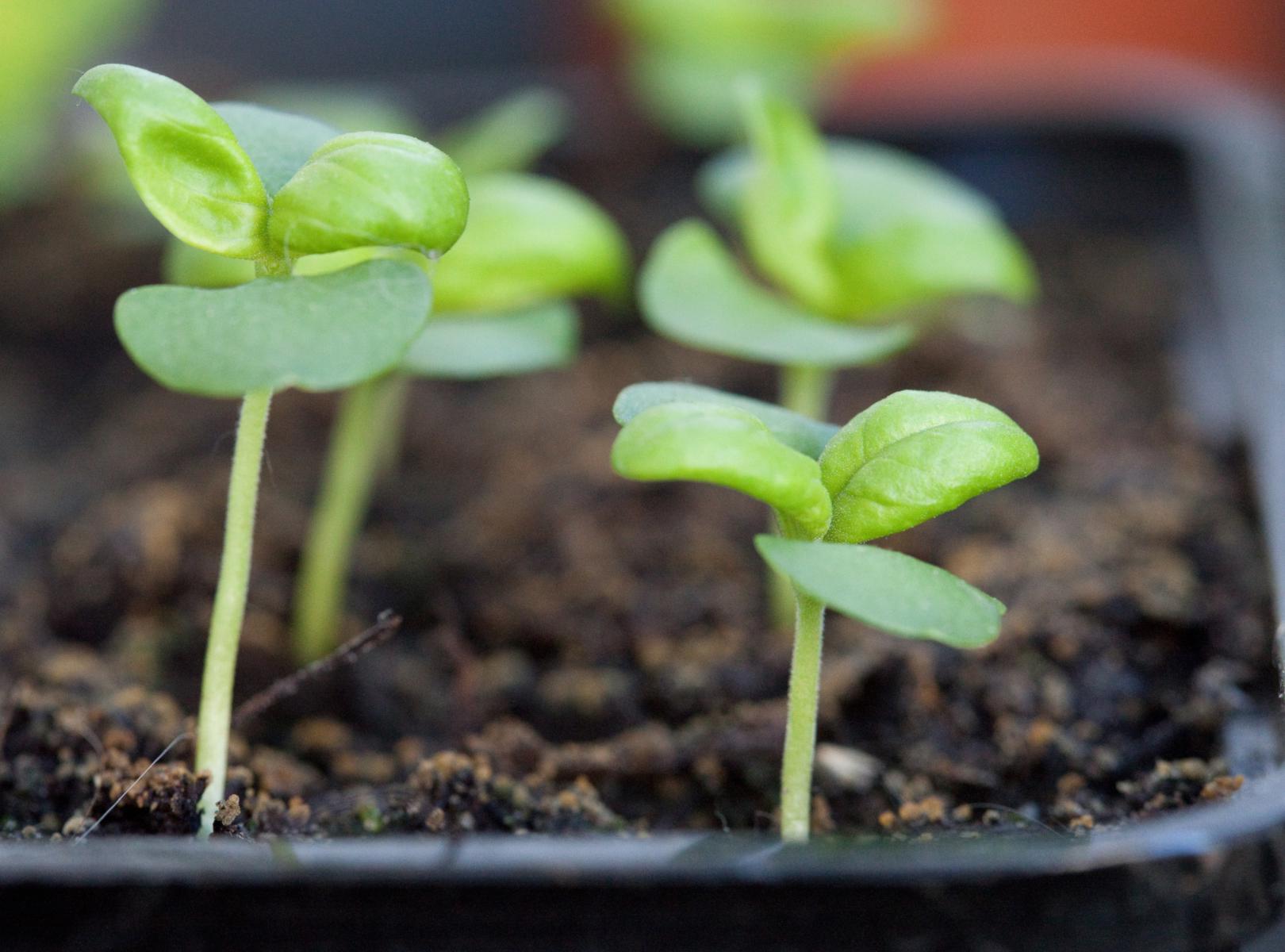Home>Gardening News and Trends>Latest News>What Temperature Do You Roast Vegetables
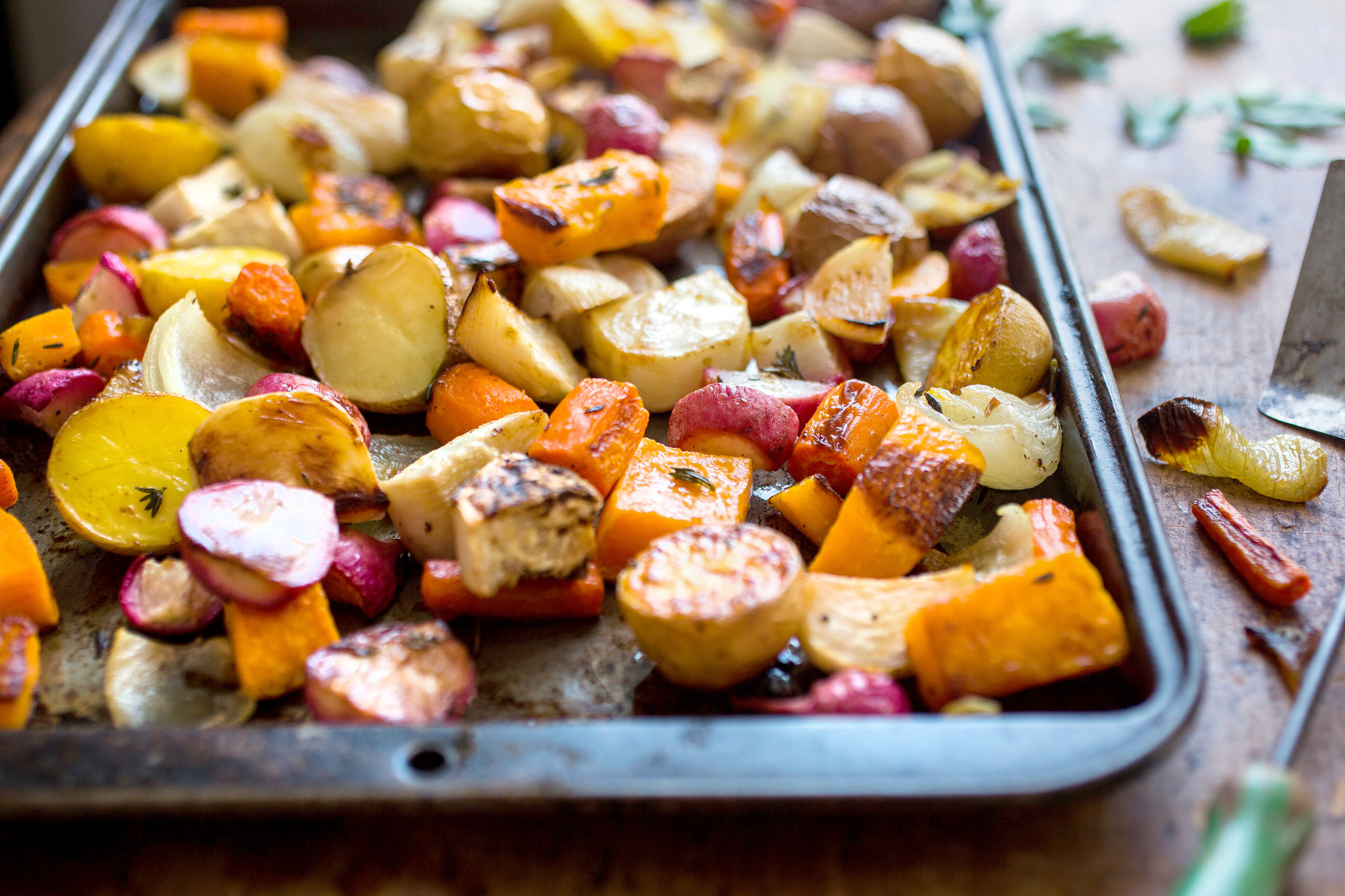

Latest News
What Temperature Do You Roast Vegetables
Modified: January 22, 2024
Discover the latest news and tips on roasting vegetables. Find out the ideal temperature for perfectly cooked veggies and elevate your culinary skills.
(Many of the links in this article redirect to a specific reviewed product. Your purchase of these products through affiliate links helps to generate commission for Chicagolandgardening.com, at no extra cost. Learn more)
Table of Contents
Introduction
Roasting vegetables is a fantastic way to bring out their natural flavors and create a delicious and nutritious dish. Whether you’re a seasoned chef or a home cook looking to elevate your culinary skills, understanding the optimal roasting temperatures for different vegetables is key to achieving the perfect results.
Roasting vegetables not only enhances their taste but also adds a delightful char and caramelization, creating a visually appealing dish. However, improper temperatures can result in uneven cooking or vegetables that are either undercooked or overcooked, leading to a lackluster and disappointing meal.
In this article, we will explore the factors that affect roasting temperatures and provide recommendations for different vegetables. We will also highlight common mistakes to avoid while roasting and offer some valuable tips to help you achieve the perfect roast every time.
Before we dive into the specifics, it’s important to note that while there are general guidelines, roasting temperatures may vary slightly depending on personal preferences, the size and thickness of the vegetables, and even the type of cooking equipment used. So, let’s get started and uncover the secrets to roasting vegetables to perfection!
Factors Affecting Roasting Temperatures
Several factors come into play when determining the ideal roasting temperature for vegetables. Understanding these factors will help you make informed decisions and achieve the desired results in your cooking.
1. Vegetable Density: The density of the vegetable plays a significant role in determining its roasting temperature. Dense vegetables like potatoes and root vegetables require a higher temperature to ensure that they cook evenly and become tender on the inside while developing a crisp exterior.
2. Size and Thickness: The size and thickness of the vegetables greatly influence the roasting time and temperature. Smaller or thinly sliced vegetables will require a shorter cooking time and a slightly higher temperature to prevent them from becoming mushy. On the other hand, larger or thicker vegetables, such as butternut squash or cauliflower steaks, will benefit from a lower and slower roasting temperature to ensure they cook evenly without burning.
3. Desired Texture: Your preferred texture also determines the roasting temperature. If you’re aiming for slightly crisp and tender vegetables, a higher temperature will help achieve that delightful texture. Conversely, if you prefer softer and more caramelized vegetables, a lower temperature and longer cooking time will allow the sugars to slowly develop and enhance their flavors.
4. Other Ingredients: Consider the other ingredients included in your roasting dish. For example, if you’re adding delicate herbs or cheese, you may want to lower the roasting temperature to prevent them from burning or becoming bitter.
5. Type of Pan: The type of pan you use can impact the roasting temperature. Dark, non-stick pans tend to absorb and retain more heat, potentially leading to faster cooking, while lighter-colored or stainless steel pans reflect heat and may require a slightly higher temperature to achieve the desired results.
6. Cooking Equipment: The type of cooking equipment you utilize, such as a conventional oven, convection oven, or even an air fryer, can influence the roasting temperature. Convection ovens and air fryers circulate hot air more efficiently, which may allow for lower roasting temperatures and faster cooking times compared to traditional ovens.
By considering these factors and making adjustments accordingly, you can achieve perfectly roasted vegetables that are cooked to your desired level of doneness and texture. Experimentation and practice will help you fine-tune your roasting techniques and discover the ideal temperatures for different vegetables.
Recommended Roasting Temperatures for Various Vegetables
When it comes to roasting vegetables, different types require different temperatures to bring out their best flavors and textures. Below, we have compiled a list of commonly roasted vegetables and their recommended roasting temperatures:
- Root Vegetables (Potatoes, Carrots, Beets): Roast at 400°F (200°C) for approximately 25-35 minutes, or until they are golden brown and fork-tender.
- Brussels Sprouts: Roast at 425°F (220°C) for about 20-30 minutes, or until they are caramelized and slightly crispy on the outside.
- Broccoli: Roast at 425°F (220°C) for 15-20 minutes, or until the florets are tender and the edges are lightly browned.
- Cauliflower: Roast at 425°F (220°C) for 20-30 minutes, or until the florets are tender and golden brown.
- Zucchini and Summer Squash: Roast at 400°F (200°C) for 12-15 minutes, or until they are slightly browned and tender.
- Asparagus: Roast at 425°F (220°C) for 10-15 minutes, or until the asparagus becomes tender and develops a slight char.
These temperatures serve as a general guideline, but it’s important to keep in mind that cooking times may vary depending on the size and thickness of the vegetables. It’s always a good idea to check for doneness periodically when roasting and adjust the cooking time as needed.
Remember, experimenting with different temperatures can result in varying textures and flavors. For example, roasting at a higher heat will yield crispier and slightly charred vegetables, while a lower temperature will result in softer and more caramelized vegetables.
Don’t be afraid to tweak the temperatures based on personal preference and desired outcomes. The goal is to achieve vegetables that are perfectly cooked, with a balance of tenderness, caramelization, and flavor.
Common Mistakes to Avoid while Roasting Vegetables
Roasting vegetables may seem simple, but there are some common mistakes that can prevent you from achieving the best results. By being aware of these pitfalls, you can avoid them and ensure your roasted vegetables turn out delicious every time.
- Overcrowding the Pan: One of the biggest mistakes is overcrowding the pan. When vegetables are too close together, they end up steaming instead of roasting. Leave enough space between each piece to allow for proper air circulation and even cooking.
- Unevenly Sized Pieces: Cutting vegetables into uneven sizes can lead to uneven cooking. Smaller pieces may become overcooked or even burnt, while larger pieces may remain undercooked. Cut the vegetables into similar-sized pieces to ensure even roasting.
- Insufficient Oil: Properly coating vegetables with oil is crucial for achieving that crispy and golden exterior. Make sure each piece is coated evenly and thoroughly with oil, ensuring they don’t stick to the pan or dry out during cooking.
- Skipping Preheating: Preheating the oven is essential for even cooking. If you skip this step, the vegetables may take longer to cook, resulting in uneven textures and flavors.
- Seasoning Too Early: Adding salt and seasoning too early can draw out moisture from the vegetables, affecting their caramelization. Season the vegetables with salt, herbs, and spices just before roasting to retain their natural juices and flavors.
- Not Flipping or Stirring: Remember to flip or stir the vegetables halfway through the cooking process. This promotes even browning and ensures that all sides are cooked evenly.
- Overcooking: Overcooking can result in mushy and unappealing vegetables. Keep a close eye on your vegetables and check for doneness regularly to prevent them from becoming overly soft or burnt.
- Using the Wrong Cooking Equipment: Different vegetables require different cooking equipment. While sheet pans are suitable for most vegetables, delicate and smaller items like asparagus may require a roasting rack to prevent them from falling through the cracks or getting overcooked.
By avoiding these common mistakes, you can elevate your roasted vegetable game and achieve perfectly cooked, flavorful, and visually appealing dishes that will impress your family and guests.
Tips for Achieving the Perfect Roast
Roasting vegetables to perfection requires some attention to detail and a few handy tips and tricks. Follow these tips to enhance your roasting skills and achieve delicious and perfectly roasted vegetables every time:
- Prep and Cut Vegetables Properly: Ensure that you wash, peel (if necessary), and dry the vegetables before roasting. Cut them into similar-sized pieces to ensure even cooking.
- Coat Vegetables Evenly: Thoroughly coat the vegetables with oil, seasonings, herbs, and spices to ensure even flavor distribution and to prevent drying out during cooking.
- Preheat the Oven: Preheat your oven to the recommended temperature to ensure even and efficient cooking.
- Arrange Vegetables in a Single Layer: Avoid overcrowding the pan and arrange the vegetables in a single layer. This allows for proper air circulation and ensures even roasting and browning.
- Monitor Cooking Time: Keep an eye on the vegetables as they roast and periodically check for doneness. Cooking times may vary based on the size and thickness of the vegetables, so adjust accordingly.
- Flip or Stir: Halfway through the cooking time, flip or stir the vegetables to ensure even browning and to cook all sides evenly.
- Add Delicate Ingredients Towards the End: If you’re including delicate ingredients like fresh herbs or cheese, add them towards the end of the roasting process to prevent them from burning or losing flavor.
- Test for Doneness: Check for doneness by inserting a fork or knife into the vegetables. They should be tender and easily pierced, indicating that they are cooked to perfection.
- Allow Vegetables to Rest: Once the vegetables are done, remove them from the oven and let them rest for a few minutes. This allows the flavors to meld and ensures a delicious final result.
- Experiment with Seasonings: Don’t be afraid to get creative with seasonings and spice combinations. Try different herbs, spices, and even citrus juices to add unique flavors to your roasted vegetables.
By following these tips, you’ll be well on your way to achieving the perfect roast every time. Remember, practice makes perfect, so don’t be discouraged if your first attempts aren’t flawless. Enjoy the process and have fun experimenting with different vegetables and flavors to create delightful and memorable dishes.
Conclusion
Roasting vegetables is a versatile and delicious way to elevate your culinary creations. By understanding the factors that affect roasting temperatures, following recommended guidelines, avoiding common mistakes, and implementing helpful tips, you can achieve the perfect roast every time.
From root vegetables to broccoli, cauliflower to asparagus, each vegetable has its own ideal roasting temperature and cooking time. Experimentation and practice will help you fine-tune your techniques and discover personal preferences for achieving the desired textures and flavors.
Remember to consider the density, size, and desired texture of the vegetables, as well as other ingredients, type of pan, and cooking equipment used. These factors can significantly impact the roasting process and final results.
Be mindful of common mistakes such as overcrowding the pan, cutting vegetables unevenly, insufficient oil, skipping preheating, seasoning too early, and overcooking. By avoiding these pitfalls, you will enhance the flavors and textures of your roasted vegetables.
Lastly, follow the provided tips to achieve the best results. Properly prep and cut the vegetables, coat them evenly, preheat the oven, arrange them in a single layer, monitor cooking time, flip or stir as needed, and test for doneness. Allowing the vegetables to rest and experimenting with different seasonings will further enhance the overall experience.
So, whether you’re serving roasted vegetables as a side dish, adding them to salads, or incorporating them into other recipes, mastering the art of roasting will take your culinary skills to the next level. Enjoy the process, embrace creativity, and savor the delicious flavors of perfectly roasted vegetables!
